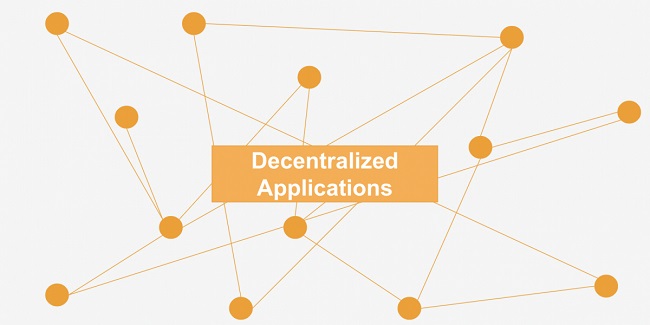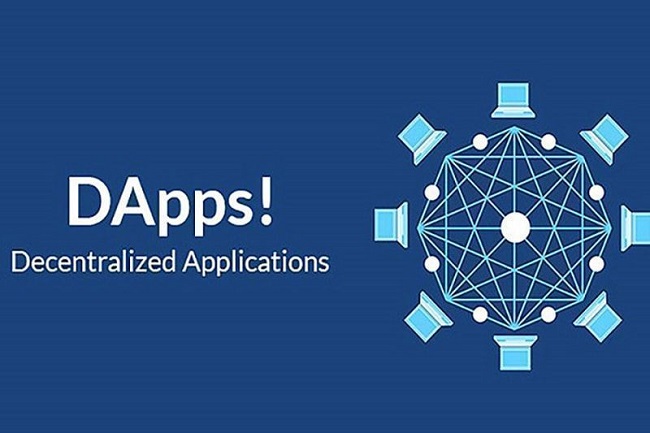The usage of blockchain technology for many digital solutions is growing fast, thus the app development industry must adapt quickly to meet consumer demand.
This article explores a recently emerging trend: blockchain applications (also known as “decentralized apps”) (DApps). How can you explain that? Don’t worry, this essay covers all the bases and makes it easy to understand blockchain’s potential uses and advantages.

So, What Exactly Is A “DAapp”?
Let’s begin with the basics by defining what we mean when we say “decentralized application.” A “dApp” is a network-based program or application that operates independently from traditional, centralized apps. Distributed applications (DApps) are a network of interconnected smart contracts.
Each smart contract serves a distinct purpose in the background of the app itself. Understand that decentralized applications (DApps) look like regular apps but run on the blockchain instead. A decentralized application (DApp) differs from a traditional app in three main ways:
A decentralized application (DApp) is one that is always freely available to the public and runs independently of a centralized authority. A decentralized application’s data and records must be available to anybody, anytime.
If you want to utilize this program with peace of mind, you’ll need to have a cryptographic token handy.
Read Also:
As A Whole, What Do Decentralized Applications Do?
DApps bridge the gap between the present generation of Web 2.0 platforms and the decentralized internet of the future, known as Web 3.0. With blockchains currently in their development, there are very few decentralized applications (dApps) available than there are standard apps.
However, the application ecosystem has begun to diversify as a result of the constant flow of innovation. If decentralized applications become the norm in the future, what changes can we anticipate? We will give you a few instances:
Wallets For Cryptocurrencies
Essential to the functioning of the distributed systems that make up Web 3.0 are crypto wallet dApps. To buy, sell, and trade cryptocurrencies, you need a crypto wallet, which may be either custodial or non-custodial.
Your private keys, which are analogous to a PIN or password, are stored in a custodial wallet. Binance is a great example of a marketplace and wallet that completes this description. Your private keys are safe with a non-custodial wallet since you have full control over them.
Decentralized Exchanges (DEXs)
Web browsers are frequently employed to connect decentralized exchanges (DEXs) DApps. If you have a digital wallet and you navigate to the DEX’s URL online, you’ll be able to connect it to the DEX’s site using an application.
After that, you’ll be able to begin communicating only with DEX dApp and using its many built-in features, including liquidity groups, raffles, NFT exchanges, and much more. One good example of a DEX is bitsoft 360.

Gaming
Decentralized gaming has quickly become an important element of the blockchain community. Games like Splinterlands and My DeFi Pet employ non-fungible tokens (NFTs) to ensure players keep the wealth they earn in the virtual world.
You may customize your gameplay experience by amassing a one-of-a-kind arsenal of guns and other gear by purchasing various non-fungible things (NFTs) available in the game.
Social Media Channels
The purpose of Steemit and other social media dApps is to facilitate online conversation in the same way that conventional social media sites like Facebook and Instagram do.
But decentralized applications (dApps) flip the script by paying you to contribute to the network rather than collecting and selling your data.
Read Also:
Final Thoughts
The development of DApps has just begun. However, hundreds of dApps already exist and offer a broad variety of services, from gaming to money transfers to virtual pet care.
Is there any significance to this for the design of software in the long run? It is reasonable to anticipate price fluctuations while blockchain applications are still developing.
The technology may have flaws, but it shows promise in areas like data ownership and security.


















